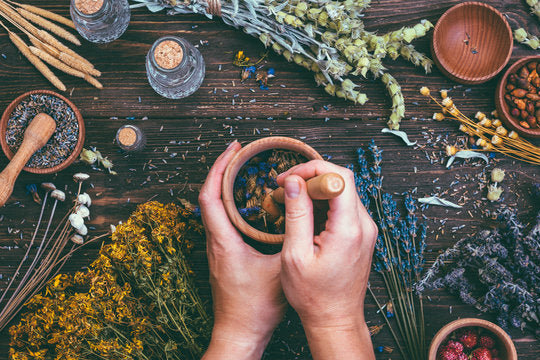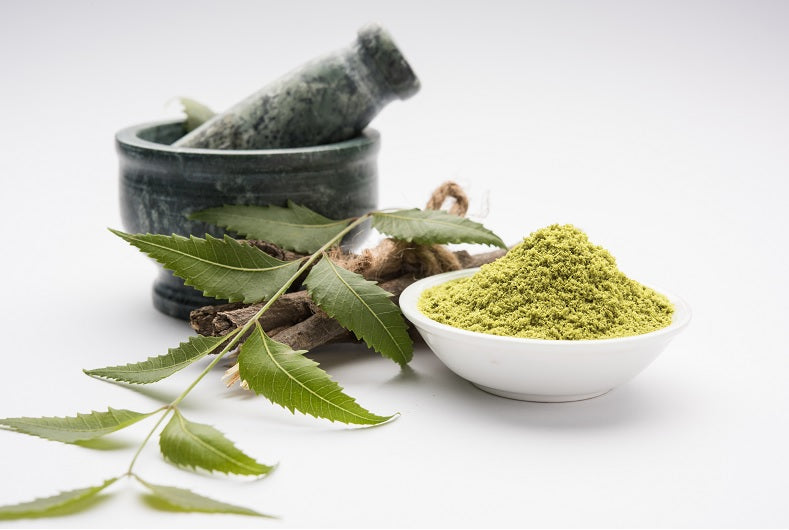
Ayurveda Doshas: Vata, Pitta & Kapha for Better Health
27 Oct, 2025Introduction – Ayurveda and the Science of Doshas In Ayurveda, health is not merely the absence ...
Read more
In Ayurveda, health is not merely the absence of disease; it is a dynamic state of balance between the body, mind, and spirit. This ancient science views every individual as a unique combination of Doshas Vata, Pitta, and Kapha, which govern all biological and psychological functions.
The word Dosha in Ayurveda literally means “that which can cause imbalance” when disturbed. Hence, maintaining harmony among the three Doshas is the cornerstone of good health.
This principle, known as the Tridosha theory, explains how Vata (movement), Pitta (transformation), and Kapha (structure) work together to sustain life. Understanding your Ayurvedic body type (Vata, Pitta, or Kapha) helps personalize your diet, lifestyle, and healing for disease prevention and balance.
वायु: पित्तं कफश्चेति त्रयो दोषा: समासत: ॥
विकृताऽविकृता देहं घ्नन्ति ते वर्त्तयन्ति च ।
(Charaka Samhita, Sutrasthana 1:57)
Vata, Pitta, and Kapha are the three Doshas that sustain and regulate the body.
When in balance (Avikruta), they maintain health; when disturbed (Vikruta), they cause disease.
Ayurveda teaches that all life is composed of the five great elements (Pancha Mahabhuta). Ether (Akasha), Air (Vayu), Fire (Agni), Water (Jala), and Earth (Prithvi). From these arise the three Doshas that form the foundation of the human constitution:
Vata Dosha (Air + Ether) – Governs all movement, communication, and circulation.
Pitta Dosha (Fire + Water) – Governs digestion, metabolism, and transformation.
Kapha Dosha (Earth + Water) – Governs structure, lubrication, and immunity.
Together, they regulate every process of life, physical, emotional, and mental. Balance among the three ensures wellness; imbalance results in disorder.
Meaning & Nature: Vata Dosha governs all motion in the body, from breathing and nerve impulses to elimination and circulation. It represents air and ether, characterized by movement, dryness, and lightness.
Qualities: Light (Laghu), Dry (Ruksha), Cold (Sheeta), Mobile (Chala).
Functions: Circulation, respiration, nerve conduction, elimination, and creativity.
Personality: Energetic, imaginative, adaptable, quick-thinking.
When balanced: It promotes vitality, enthusiasm, and clarity.
When Imbalanced: Causes anxiety, dryness, restlessness, insomnia, constipation.
Favor warm, moist, grounding foods: soups, ghee, stews, cooked grains.
Avoid cold, raw, dry foods.
Maintain a regular daily routine; eat and sleep on time.
Perform Abhyanga (oil massage) with sesame oil or almond oil.
Gentle yoga, warm baths, and calm breathing soothe Vata.
Meaning & Nature: Pitta Dosha controls digestion, metabolism, and body temperature. It is made of fire and water, representing heat, sharpness, and intensity.
Qualities: Hot (Ushna), Sharp (Tikshna), Oily (Snigdha), Light (Laghu).
Functions: Digestion, metabolism, vision, intelligence, and body temperature.
Personality: Ambitious, focused, courageous, analytical.
When balanced: It promotes confidence, intellect, and a radiant complexion.
When Imbalanced: Causes anger, irritability, heartburn, rashes, or inflammation.
Favor cooling foods: cucumber, coconut, milk, ghee, greens, sweet fruits.
Avoid spicy, fried, sour, and fermented foods.
Practice cooling Pranayama (Sheetali, Chandra Bhedana).
Avoid excessive heat and stress; rest near water or nature.
Herbs like Amla, Guduchi, and Shatavari calm Pitta.
Meaning & Nature: Kapha Dosha provides structure, lubrication, and emotional stability. Formed from earth and water, it governs growth, strength, and immunity.
Qualities: Heavy (Guru), Slow (Manda), Cold (Sheeta), Oily (Snigdha).
Functions: Growth, stability, lubrication of joints, and emotional calm.
Personality: Compassionate, patient, and loyal.
When balanced: It creates endurance, immunity, and serenity.
When Imbalanced: Leads to lethargy, congestion, weight gain, and emotional heaviness.
Favor warm, light, and spicy foods: ginger, pepper, lentils, leafy greens.
Avoid cold, heavy, and oily meals.
Exercise daily; include dynamic yoga and brisk walking.
Avoid oversleeping and daytime naps.
Every person is a unique combination of all three doshas; one or two usually dominate.
Vata type: Lean, energetic, creative, but easily fatigued.
Pitta type: Medium build, strong digestion, sharp intellect.
Kapha type: Sturdy, calm, nurturing, slow metabolism.
Dual Doshas: Vata-Pitta, Pitta-Kapha, Vata-Kapha.
Tridoshic: Balanced constitution, rare and harmonious.
Your Prakriti (natural constitution) remains constant, while Vikriti (current imbalance) can fluctuate with diet, stress, or season.
Take an Ayurveda Dosha Test to understand both.
Warm, oily, grounding foods: ghee, soups, cooked rice.
Herbs: Hing, ginger, Ashwagandha.
Cooling, hydrating meals: cucumber, coconut, fennel.
Avoid spicy, sour, and fermented foods.
Light, dry, and warm foods: millets, leafy greens, black pepper.
Include ginger tea, honey, and detoxifying spices.
Eat according to season, age, and dosha imbalance, practicing mindful, calm eating.
|
Dosha |
Signs of Imbalance |
Ayurvedic Remedies |
|
Vata |
Dry skin, anxiety, and insomnia |
Warm milk, sesame oil massage, grounding yoga |
|
Pitta |
Anger, rashes, acidity |
Cooling foods, coconut oil, meditation |
|
Kapha |
Lethargy, congestion, weight gain |
Exercise, warm water with honey, detox herbs |
Rising during Brahma Muhurta (approximately 4:30–6:00 AM) is considered ideal, as this time is dominated by Vata dosha, which governs movement and creativity. The air is pure, the mind calm, and energy subtle — perfect for meditation and self-reflection. Waking late increases Kapha, leading to heaviness, sluggishness, and mental dullness.
Start your day by cleansing the senses and organs to remove Ama (toxins) and prepare the body for nourishment.
Tongue Scraping (Jihva Nirlekhana): Removes toxins accumulated overnight, stimulates digestion, and enhances taste perception.
Oil Pulling (Gandusha or Kavala): Swish warm sesame or coconut oil in your mouth for a few minutes to strengthen gums, freshen breath, and clear Ama from the oral cavity.
Nasya (Nasal Drops): Apply a few drops of medicated or plain ghee/sesame oil in the nostrils. This lubricates nasal passages, clears sinuses, and strengthens prana (vital life force).
These small rituals balance Kapha in the morning and keep the respiratory and sensory systems healthy.
Daily self-oil massage is deeply grounding and detoxifying.
Vata types: Use warm sesame or almond oil to calm the nervous system and relieve dryness.
Pitta types: Use cooling coconut or sunflower oil to soothe inflammation and reduce heat.
Kapha types: Use warming mustard oil or linseed oil to stimulate circulation and reduce heaviness.
Ayurveda sees the mind and body as one. Yoga and Pranayama (breathing practices) keep the Doshas balanced, improve mental clarity, and regulate energy flow.
Vata: Slow, grounding yoga (Hatha, Yin) and deep breathing (Anulom Vilom).
Pitta: Cooling yoga (Moon salutations) and Sheetali Pranayama.
Kapha: Stimulating yoga (Sun salutations, backbends) and vigorous breathing (Kapalabhati).
After yoga, spend 10–15 minutes in meditation or gratitude to cultivate peace and emotional stability.
Eat your main meal at noon, when Pitta (digestive fire) is strongest, allowing optimal digestion and nutrient absorption.
Breakfast should be light and grounding; dinner early and easy to digest (by 7:30 PM).
Eat mindfully, no screens, no talking, and stop when 75% full.
This rhythm supports Agni and prevents the accumulation of Ama (toxins).
The hours between 10 PM and 2 AM are governed by Pitta. Staying awake during this time overstimulates the mind and weakens digestion. Sleeping early helps the body rejuvenate tissues, balance hormones, and calm the nervous system.
Each season influences the Dosha balance. Ayurveda recommends adapting diet and habits accordingly:
Winter & Early Spring (Kapha season): Favor light, spicy, and warm foods; stay active.
Summer (Pitta season): Favor cooling foods like cucumber, coconut, and greens.
Autumn & Early Winter (Vata season): Favor warm, oily, nourishing foods and regular routines.
Adapting to natural cycles keeps immunity strong and prevents seasonal imbalances.
Vata, being light, dry, and mobile in nature, benefits from herbs that are warming, grounding, and strengthening. These herbs soothe the nervous system, improve digestion, and provide stability.
Ashwagandha (Withania somnifera): A premier adaptogen that calms anxiety, strengthens the nerves, and promotes restful sleep.
Bala (Sida cordifolia): Improves stamina, nourishes muscles and joints, and supports energy without overstimulation.
Dashamoola (Ten roots formula): A classical Ayurvedic combination that pacifies Vata, relieves pain, and supports joint and respiratory health.
Pitta is hot, sharp, and oily in nature. To prevent overheating and inflammation, Ayurveda recommends herbs that are cooling, soothing, and detoxifying.
Amla (Indian Gooseberry): Rich in Vitamin C and antioxidants, it cools the body, supports digestion, and rejuvenates skin and eyes.
Guduchi (Tinospora cordifolia): A powerful detoxifier and immune booster that balances Pitta without depleting energy.
Shatavari (Asparagus racemosus): Nourishes reproductive tissues, calms irritability, and supports hormonal and digestive balance.
Kapha, being heavy, cold, and stable, requires herbs that are warming, stimulating, and drying to counteract sluggishness and excess mucus.
Trikatu (blend of ginger, black pepper, and long pepper): Stimulates metabolism, clears Ama (toxins), and boosts digestion.
Tulsi (Holy Basil): A natural decongestant and immune enhancer that reduces Kapha and promotes respiratory health.
Punarnava (Boerhavia diffusa): Acts as a natural diuretic and detoxifier, helpful in managing fluid retention and weight balance.
Certain formulations in Ayurveda are known as Rasayanas — rejuvenating tonics that nourish all tissues, strengthen immunity, and promote longevity.
Chyawanprash: A time-tested blend of herbs like Amla, Ashwagandha, and Ghee that supports respiratory health, boosts Ojas (vital energy), and builds resilience.
Amrit Kalash: A classical Maharishi Ayurvedic formulation that enhances immunity, combats stress, and promotes cellular regeneration.
|
Dosha |
Balanced Mind |
Imbalanced Mind |
|
Vata |
Creative, joyful |
Fearful, restless |
|
Pitta |
Focused, courageous |
Angry, irritable |
|
Kapha |
Loving, peaceful |
Attached, lazy, depressed |
Meditation, self-awareness, and Pranayama balance emotional energy and mental clarity.
Modern research aligns Dosha theory with biology:
Vata → nervous system, movement, neurotransmission.
Pitta → metabolism, enzymes, endocrine balance.
Kapha → structure, immunity, and anabolic processes.
This reflects Ayurveda’s ancient understanding of personalized medicine and bio-energetic balance.
True wellness is the balance of Vata, Pitta, and Kapha. Ayurveda teaches that health is achieved not by suppression but by alignment with nature through food, routine, rest, and mindfulness.
Take your Dosha test, follow a dosha-specific diet, and live with awareness.
When Doshas are in harmony, the mind is peaceful, the body is strong, and the spirit shines with vitality.
Yes. When Vata, Pitta, or Kapha go out of balance, they disturb the body’s natural harmony, leading to disorders like acidity, arthritis, anxiety, obesity, or fatigue. Balanced doshas maintain health, while imbalance invites disease and emotional instability.
Wake early, sleep before 10 pm, eat meals at fixed times, exercise daily, and meditate. Follow the sun’s rhythm, main meal at noon, and practice Abhyanga (oil massage) regularly. Consistency balances Vata, calms Pitta, and mobilizes Kapha.
All three Doshas are vital, but Vata is considered the leader since it governs movement and controls Pitta and Kapha. If Vata becomes imbalanced, it can easily disturb the others; hence, managing Vata first ensures overall balance.
No. Pitta represents fire and metabolism, while acidity is a symptom of excess Pitta. When aggravated, Pitta overheats digestion, causing acid reflux, heartburn, or inflammation. Balancing Pitta through cooling foods and calm routines relieves these symptoms.
Kapha benefits from warm, light, and stimulating drinks like ginger tea, cinnamon water, or tulsi infusions. Herbal teas and Trikatu (ginger, black pepper, long pepper) help boost Agni (digestive fire), reduce mucus, and prevent sluggishness and heaviness.
Introduction – Ayurveda and the Science of Doshas In Ayurveda, health is not merely the absence ...
Read more Guide to Immunity
Guide to Immunity
 Featured Articles
Featured Articles

Are you struggling with your oral health because of your eating habits? Are toothaches becoming your new normal because you have not been brushing well? Is eating ice cream a big NO, as you have brushed a little too much? A lot of you have been made to believe that your oral issues emanate from what you are doing wrong or not doing the right thing. What if we tell you that you have been approaching this all wrong and trying to solve the problems topically instead of addressing the root cause? Do you ever think about the real reason for these significant dental issues?
Ayurveda helps you focus on the fundamentals and identify the root cause. It is the science of treating the underlying imbalances and correcting the cause in a completely natural and effective way. Among its numerous health benefits, when it comes to oral health, Ayurvedic Toothpaste is a game-changer for preserving strong and healthy teeth. A natural and effective alternative to the chemical-laden equivalents and a beneficial synergy of herbs that help in holistic dental care. Surprising, right!? Well, read on to turn your surprise into a new belief!


नित्यमध्मान तां तांस्तु व्याधिभिश्च विवर्जितः।
रसैश्च दन्तमूलानां रूक्षैराचाम्य विक्रियाम्॥
Meaning: Regularly cleaning your mouth makes your teeth and gums healthy and prevents diseases.
The Charaka Samhita mentions the importance of oral care in overall health. This is more than just information from ancient scriptures; much research has validated the role of a healthy mouth in a healthy body. A 2022 study in Frontiers of Microbiology highlighted this critical link: an imbalance in the oral microbiome causes periodontal disease and promotes cardiovascular disease development.
Wondering how? Saliva is the first fluid that is secreted during digestion. It lubricates the tongue and oral cavity and ensures that the whole digestive tract stays lubricated, along with the chewed food passed down to the stomach. It carries all microbes into your gut and is the most crucial link between oral and overall health
Saliva also contains some antimicrobial proteins and enzymes that keep harmful microorganisms from growing while ensuring the good ones thrive. However, any saliva production or composition imbalance can affect the oral microbiota. This could be due to poor oral hygiene, an unhealthy diet, or systemic health issues.
This imbalance can have dire consequences for oral health, such as dental caries, gum issues, and infections. Moreover, balanced saliva helps lubricate and break down food for easy digestion and ensures that teeth get essential minerals to maintain and repair themselves.

Dantadhaawan is an ancient Ayurvedic oral hygiene practice that involves using herbal twigs, AKA ‘‘Datoon’’, to clean teeth and gums. Commonly used twigs include those from the neem, babool, and liquorice plants. These twigs have antimicrobial properties that help maintain oral hygiene.
According to the Shadrasa (six tastes) in Ayurveda, every herb has a Rasa (dominant taste) that determines its properties and actions.
An ideal toothpaste must contain Katu, Tikta, Kashaya, and Madhura Rasa, each of which positively impacts maintaining the health of our oral cavity.
Let’s uncover the properties of these essential Rasas to know more:
|
Rasa |
Action |
|
Katu (Pungent) |
It deeply cleanses the oral cavity |
|
Tikta (Bitter) |
Antibacterial & antiseptic action |
|
Kashaya (Astringent) |
Provides pain relief |
|
Madhura (Sweet) |
Strengthens the gums & teeth |
You see, an Ayurvedic toothpaste not only cleanses your teeth but also gives Bala (strength) through the properties of the natural Dravyas (herbs) used in it.

It may sound complex, but formulating toothpaste at home is as easy as making a face pack! All you need is 10 grams of dry leaves or powders of neem, mulethi, jamun, and amalaki. Grind or mix them, and your dry toothpaste powder is ready! During every brushing session (preferably morning and evening), mix it with your *Dosha-appropriate adjuvants. Vata *Dosha* can mix sesame oil, Pitta *Dosha* can mix ghee, and Kapha *Dosha* can mix honey/mustard oil, and your quick, healthy toothpaste is ready!
If you’re a busy bee, not interested in DIYs, or find it difficult to source these ingredients, don’t worry! We have Maharishi Ayurveda Ayurdent Toothpaste. It is your one-stop solution to all your oral problems. It’s a unique formulation that works on your saliva and is suitable for all body types, irrespective of the Doshic predominance.
It contains neem for cleansing, triphala for balancing, and meswak & ginger for stimulating saliva. Ayurdent promotes holistic oral health naturally and provides protection from major oral problems like cavities, plaque, bleeding gums, toothache, sensitivity, and bad breath. It contains the goodness of 20 Ayurvedic ingredients and is free from SLS and fluoride. Certified by COSMOS Natural, it stands out for its authenticity compared to other Ayurvedic and herbal toothpaste. This innovative, non-foaming formula is a must-try in the category.
 Recent Blogs
Recent Blogs


As per Ayurveda, no two individuals are alike. Maharishi Ayurveda offers personalised treatment for each individual at all touch-points. Consult our expert Vaidyas to get root cause-based personalised treatment from the comfort of your home
CONSULT VAIDYA